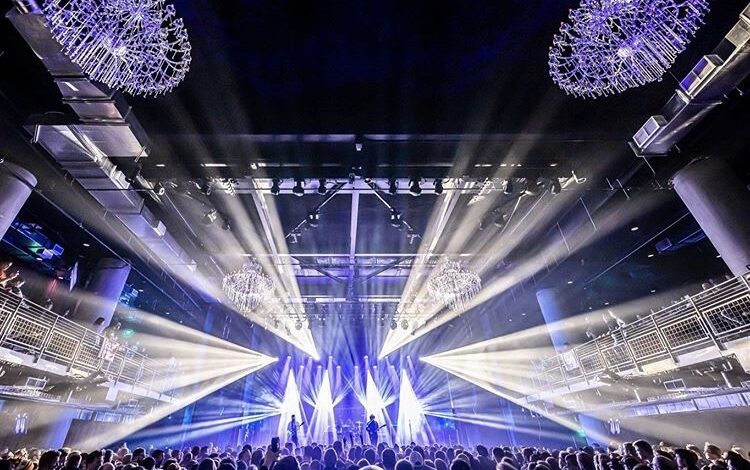
LED stage lighting has revolutionized the way performances are illuminated, providing vibrant colors, dynamic effects, and energy efficiency. With the rise of technology, these lights have become essential for events ranging from concerts to theater productions. This article explores how LED stage lighting enhances performances and why it has become a preferred choice among professionals.
The Advantages of LED Stage Lighting
LED stage lighting offers numerous benefits over traditional lighting systems. Firstly, these lights consume significantly less energy, which not only reduces costs but also minimizes heat output. This feature allows for longer usage without overheating issues, making them ideal for extended performances. Additionally, the longevity of LED lights means they need to be replaced less frequently, contributing to lower maintenance costs.
Secondly, LED stage lighting provides superior color accuracy and a broader spectrum of colors. This ability enables lighting designers to create stunning visuals that can dramatically enhance the audience’s experience. The flexibility in color mixing allows for creative expression, enabling performers to establish various moods and atmospheres during their acts.
Furthermore, LED lights can be programmed for dynamic effects, including dimming, flashing, and color changes. This programmability makes them an excellent choice for synchronized performances, where lighting needs to match the rhythm of the music or the actions on stage. Ultimately, these advantages make LED stage lighting an indispensable tool in modern performance art.
How LED Stage Lighting Transforms Performances
When utilized effectively, LED stage lighting can completely transform a performance. For instance, during a concert, the right lighting can enhance the emotional impact of a song. Bright, pulsating lights may energize the crowd during an upbeat number, while soft, subtle lighting can create an intimate atmosphere during slower ballads. By using LED stage lighting creatively, performers can engage their audience on a deeper level.
Moreover, LED lights can be strategically placed to highlight specific areas of the stage. This focused lighting draws the audience’s attention to the performers, ensuring that every gesture and expression is visible. Stage light bars are particularly effective in this regard, as they provide wide coverage and can be easily adjusted to illuminate various sections of the stage. Additionally, the ability to change colors rapidly allows for seamless transitions between different scenes or song segments, keeping the audience captivated throughout the show.
By incorporating stage light bars into their lighting design, performers can create dynamic visual narratives that complement the music and enhance the overall experience. This synergy between lighting and performance art is essential for captivating audiences and making each show truly unforgettable.
The Versatility of LED Stage Lighting Solutions
One of the most appealing aspects of LED stage lighting is its versatility. These lights are suitable for various applications, including theater productions, live music events, corporate functions, and even weddings. Each application requires a unique approach to lighting design, and LED solutions can easily adapt to meet these diverse needs.
In theater productions, for example, LED stage lighting can create distinct environments that transport the audience into different worlds. Whether simulating a sunset or a moonlit night, the ability to adjust colors and intensities enhances storytelling. Furthermore, LED lights can be integrated into set designs, becoming part of the scenery while still serving their primary purpose of illuminating the stage.
Exploring Different Types of LED Stage Lighting
Various types of LED stage lighting solutions are available, each designed for specific effects and settings. Some common types include wash lights, spotlights, and PAR lights. Wash lights provide a broad spread of light, ideal for illuminating large areas and creating washes of color across the stage. In contrast, spotlights focus on a particular performer or area, drawing the audience’s attention where it’s needed most.
PAR lights, known for their versatility, can be used in numerous applications, from theater to concerts. These lights are available in different sizes and configurations, allowing lighting designers to choose the best option for their specific needs. By understanding the strengths and uses of each type, professionals can effectively incorporate LED stage lighting into their performances.
The Role of LED Controllers in Stage Lighting Design
Effective lighting design goes beyond just selecting the right lights; it also involves using controllers to manage those lights. LED controllers allow lighting designers to program and manipulate the lights, creating dynamic effects that enhance the overall performance. With the ability to control brightness, color, and effects, these controllers empower designers to bring their visions to life.
Moreover, many LED controllers feature intuitive interfaces that make programming straightforward. This ease of use enables designers to focus more on creativity rather than technical details, allowing them to experiment with new ideas and lighting techniques. Additionally, the integration of controllers into LED stage lighting setups streamlines the overall design process, leading to more cohesive and visually striking performances.
Maintenance and Care for LED Stage Lighting
While LED stage lighting is known for its durability, proper maintenance is essential to ensure optimal performance. Regular cleaning of the lights is crucial, as dust and grime can diminish brightness and color accuracy. Technicians should follow manufacturer guidelines for cleaning and handling to prevent damage.
Moreover, it’s important to inspect the wiring and connections regularly. Ensuring that all components are functioning correctly prevents unexpected failures during performances. By taking these proactive steps, lighting professionals can extend the lifespan of their LED stage lighting solutions, ensuring they remain an integral part of their toolkit for years to come.
Frequently Asked Questions
What are the benefits of using LED stage lighting?
LED stage lighting offers energy efficiency, longevity, vibrant colors, and programmability, making it an excellent choice for various performances.
How does LED lighting enhance stage performances?
LED lighting enhances performances by creating dynamic effects, establishing moods, and focusing attention on specific performers or areas of the stage.
Can LED stage lighting be used in theater productions?
Yes, LED stage lighting is versatile and can be effectively used in theater productions to create immersive environments and enhance storytelling.
How do I choose the right type of LED stage lighting for my event?
Consider the type of event, the size of the venue, and the desired effects. Common types include wash lights, spotlights, and PAR lights.
What maintenance is required for LED stage lighting?
Regular cleaning and inspections of wiring and connections are essential to ensure optimal performance and longevity of LED stage lighting systems.
Conclusion
In conclusion, LED stage lighting has become a cornerstone of modern performance art. Its ability to enhance visual aesthetics, improve energy efficiency, and offer versatility makes it an invaluable tool for lighting designers and performers alike. As technology continues to evolve, we can expect even more innovative solutions that will elevate performances to new heights. By embracing LED stage lighting, performers can create unforgettable experiences that leave a lasting impression on their audiences.





